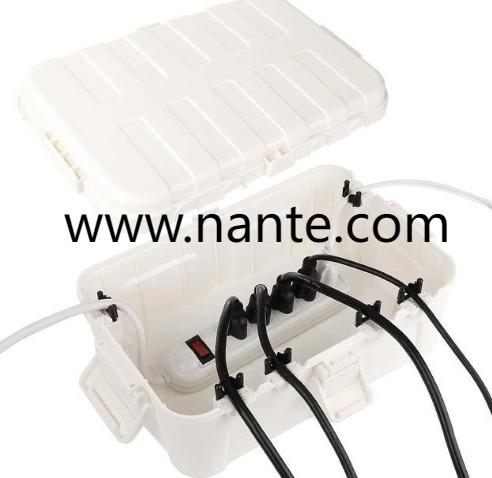What Practical Checks Should Facility Teams Perform Around Socket Boxes

Every day facilities face quiet hazards that only show up when something fails. A Socket Box tucked behind a cover might seem trivial until an inspection reveals wear, loose fittings, or exposure to moisture. Treating these enclosures as central to a building safety routine shifts maintenance from emergency reaction to steady care, and it keeps occupant comfort and operations running without surprises.
Start by thinking about the enclosure as more than a mounting place. The material choice influences how you maintain it. Some boxes offer a light friendly feel while others are made to withstand rough handling and heat. Knowing whether the housing is suited for indoor use or built to resist outdoor conditions helps prioritize checks and replacement schedules.
A sensible approach to upkeep includes visual checks, gentle cleaning, and attention to fittings. Look for signs that plates are not seated evenly, screws are loose, or seals show dirt that could trap moisture. When enclosures are near heavy foot traffic or equipment, confirm that covers remain intact and that the mounting remains stable. These small inspections help catch minor problems before they affect connected systems.
When work inside an enclosure is needed, plain safety rules make a big difference. Ensure power is not present at the point of service and use protective equipment appropriate for the environment. If there is any doubt about internal wiring or the task requires live circuit work, bring in someone with the right qualifications. Treating the enclosure as part of an electrical network reinforces caution and reduces the chance of a mishap.
Environmental risk matters in maintenance planning. Boxes located where water can reach them should be the ones checked most often and fitted with protective sealing that keeps outlets dry. In dusty or corrosive atmospheres, choose housings that resist degradation so that fasteners and mounting points do not fail prematurely. A practical inspection checklist can focus attention on spot checks that matter given local conditions.
Good labeling and clear access reduce confusion during service. When owners and technicians can quickly identify the enclosure purpose and what it feeds, troubleshooting time drops and chances of accidental disconnection fall. If circuits are altered during renovations, update any markings so future checks are straightforward and reliable. Clear visual cues also help nontechnical staff know when to call for professional attention instead of attempting risky fixes.
Preventive replacement is part of steady maintenance. A worn gasket or a corroded screw may seem minor but can let in contaminants that cause problems over time. Replacing aging components is often more efficient than waiting for a failure that interrupts work. Choose replacement parts that match original specifications so mounting and protective features remain effective.
Training matters too. Short sessions for maintenance staff on how to perform a safe basic inspection, what signs to watch for, and which tasks to leave to specialists make regular routines safer and more useful. Including enclosure checks in routine rounds ensures they are not overlooked in a busy schedule and builds a habit of shared responsibility around electrical safety.
As conversation around building resilience and occupant wellbeing grows, facility managers are rethinking maintenance as part of overall asset stewardship. Enclosures that are selected and maintained with practical considerations in mind support reliable operations and help integrate safety into everyday workflows.
For those who want a clear starting point about enclosure types, materials, and when to use weatherproof options, the manufacturer resource outlines common configurations and basic safety guidance. It is a helpful companion for planners and technicians who want to align maintenance choices with the enclosure's intended function. To review practical details and manufacturer notes about these enclosures see www.nante.com where additional context about selection and safe usage is available. This resource complements on site assessments and helps teams make informed, steady choices about upkeep and safety.


